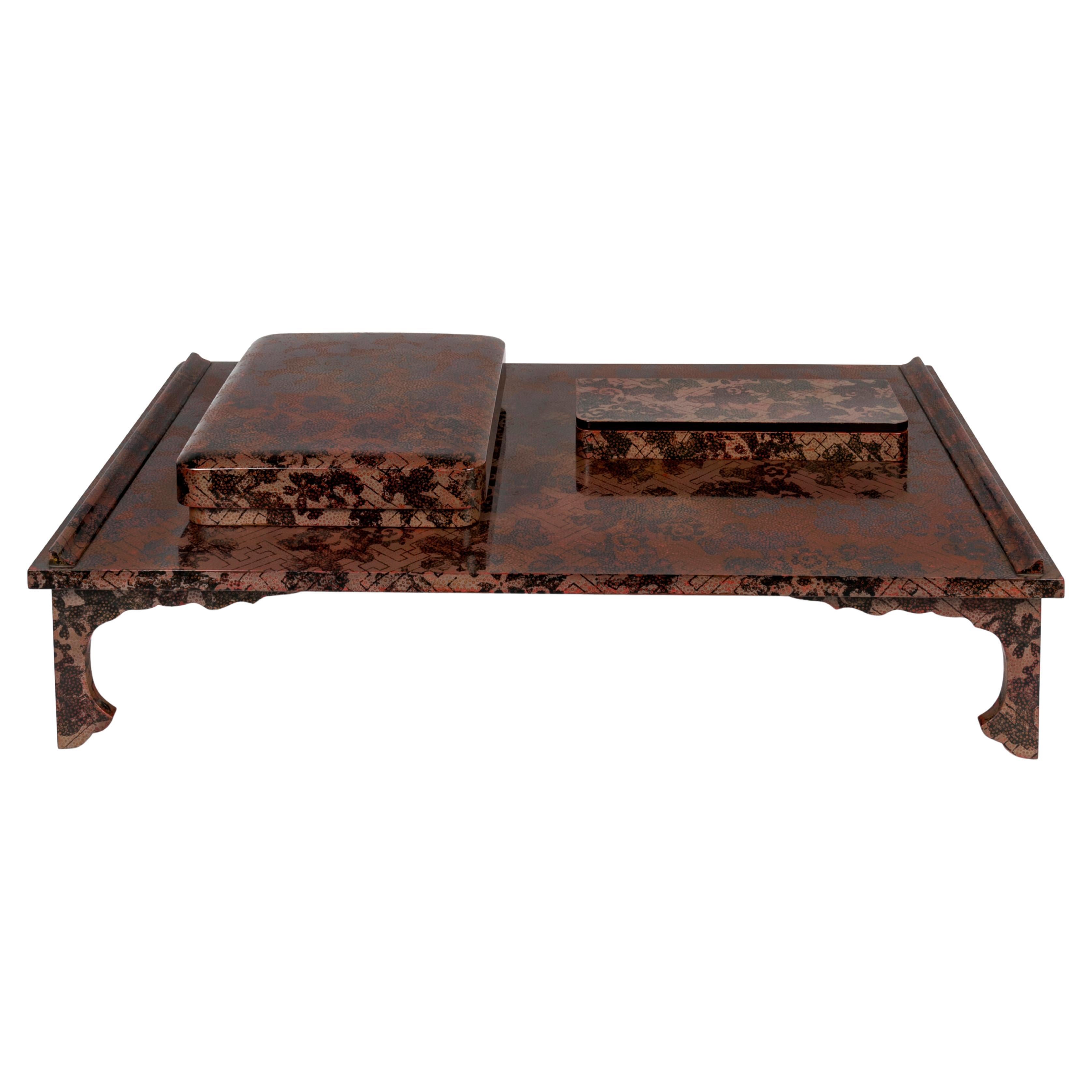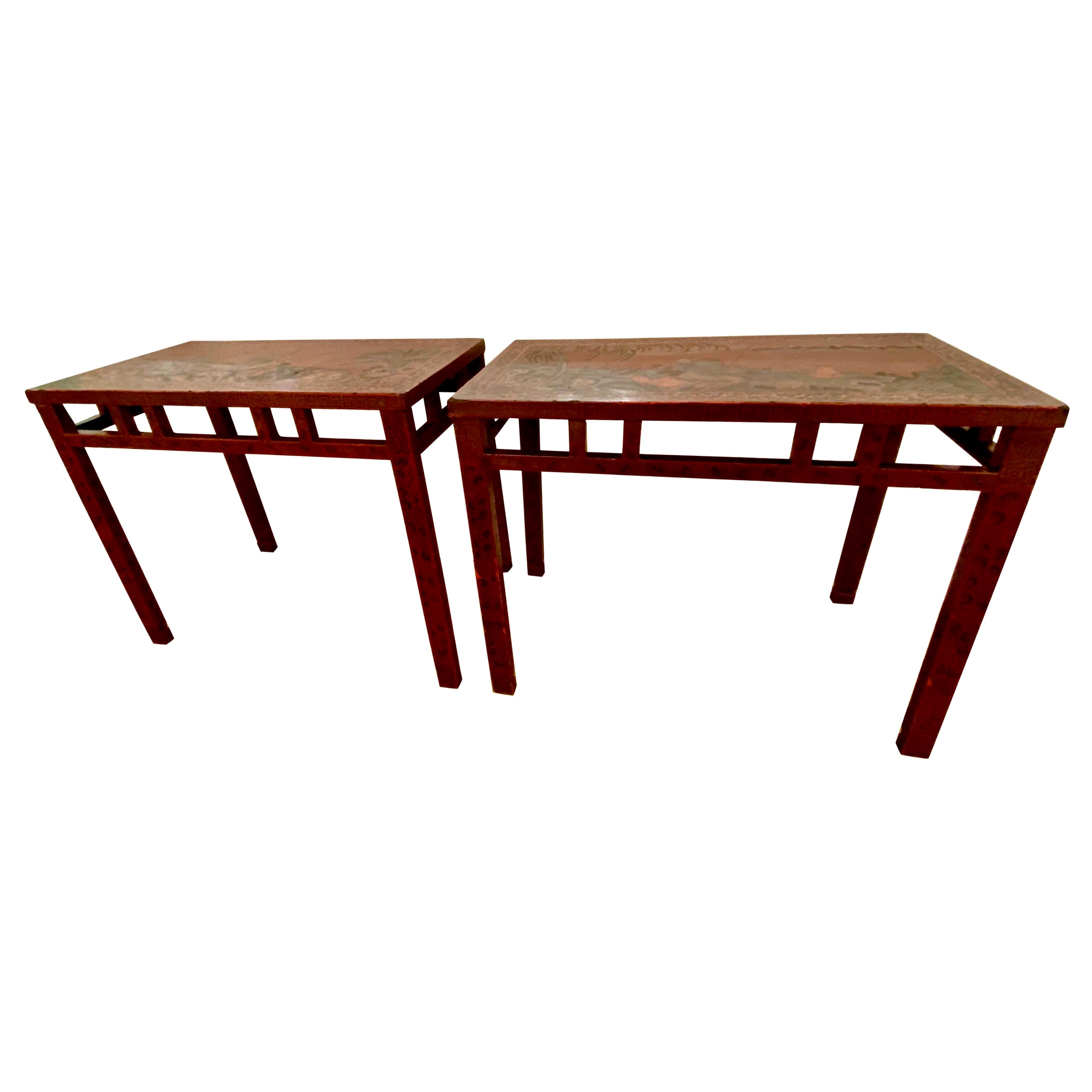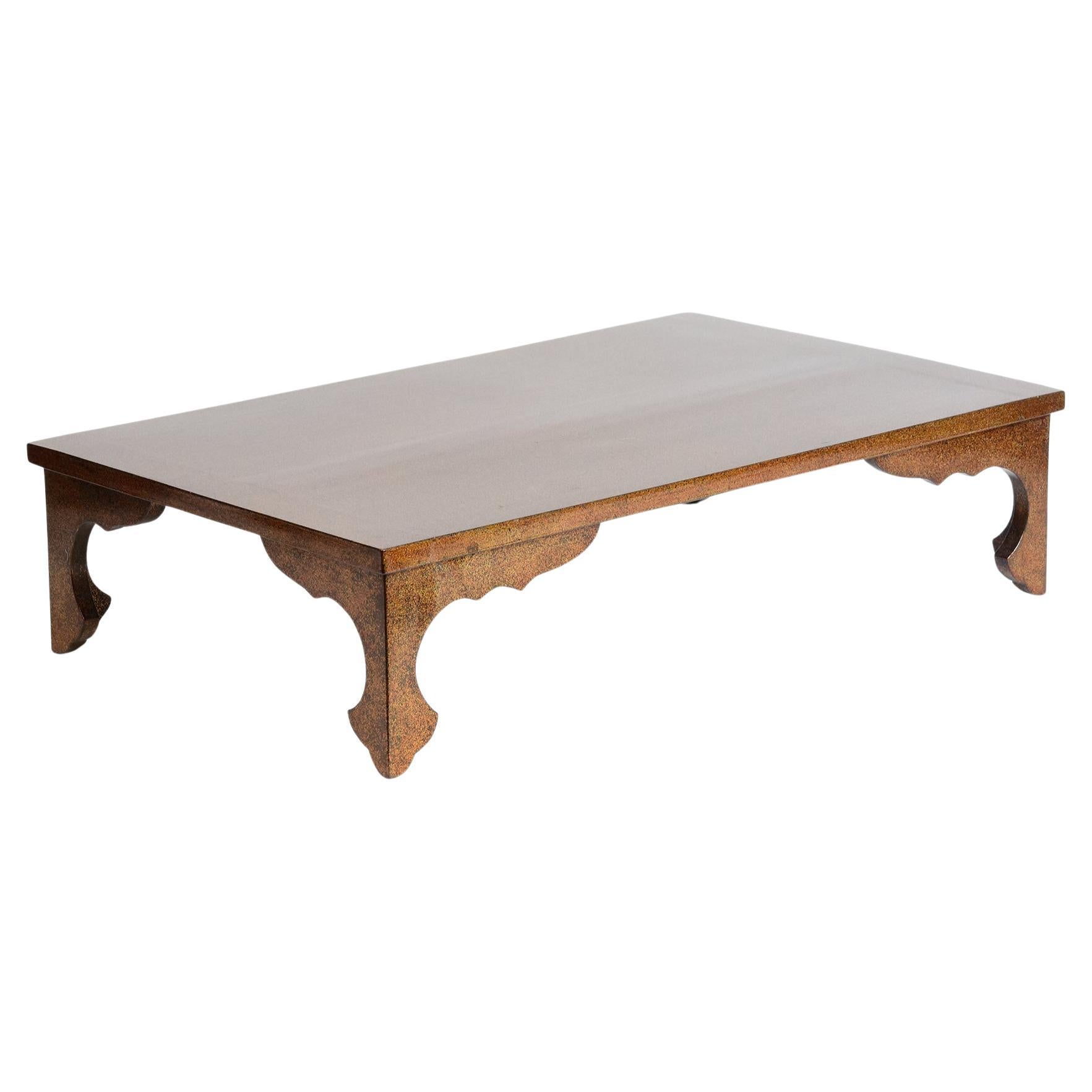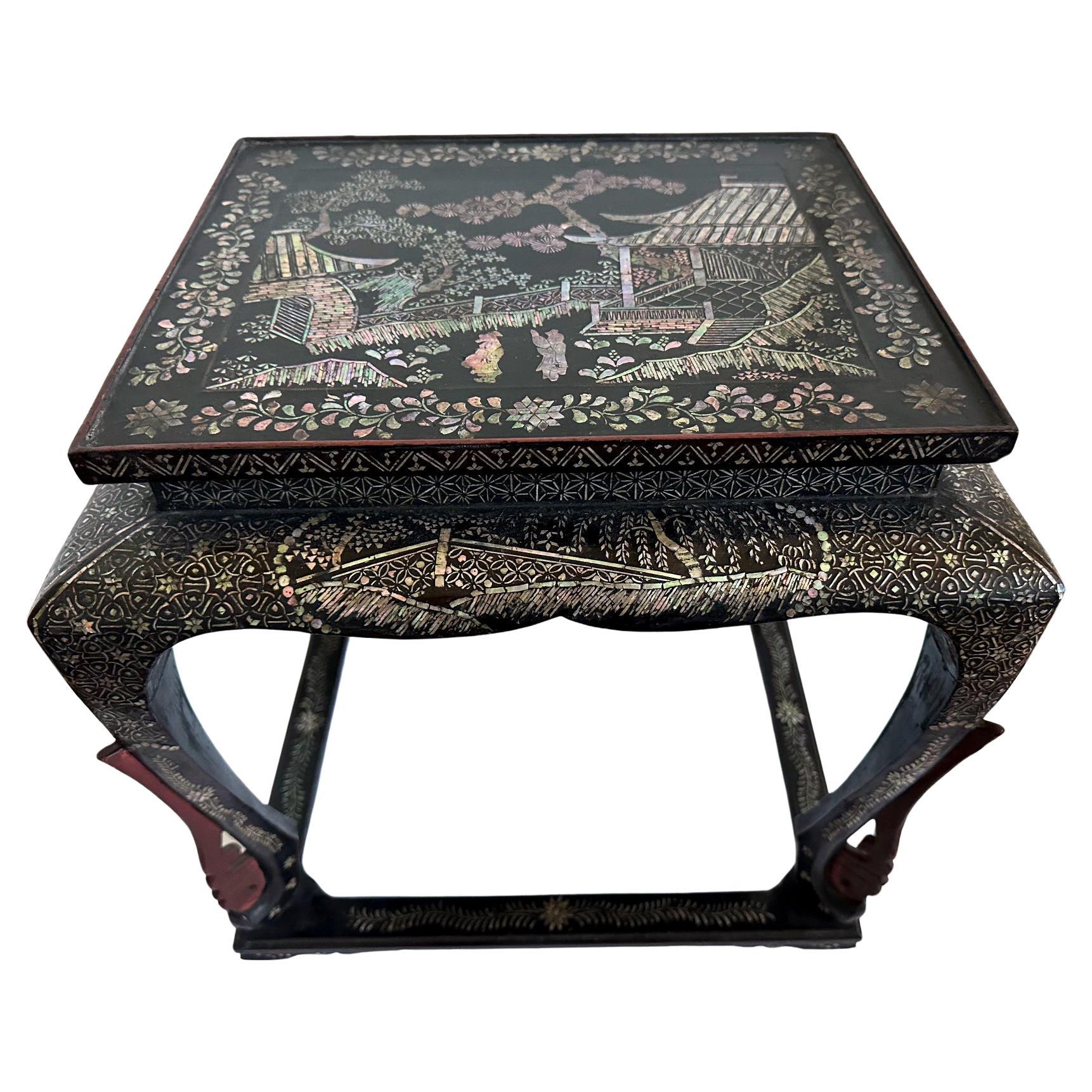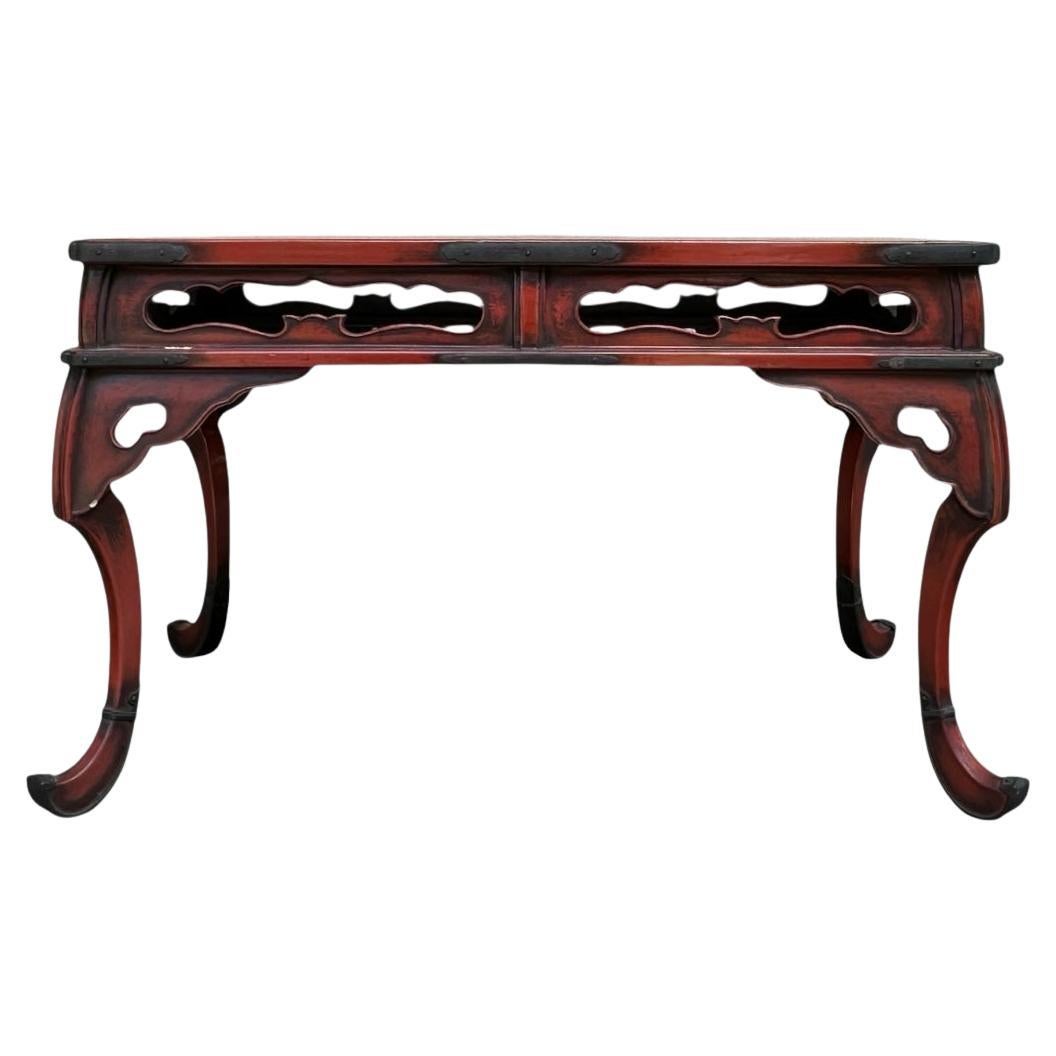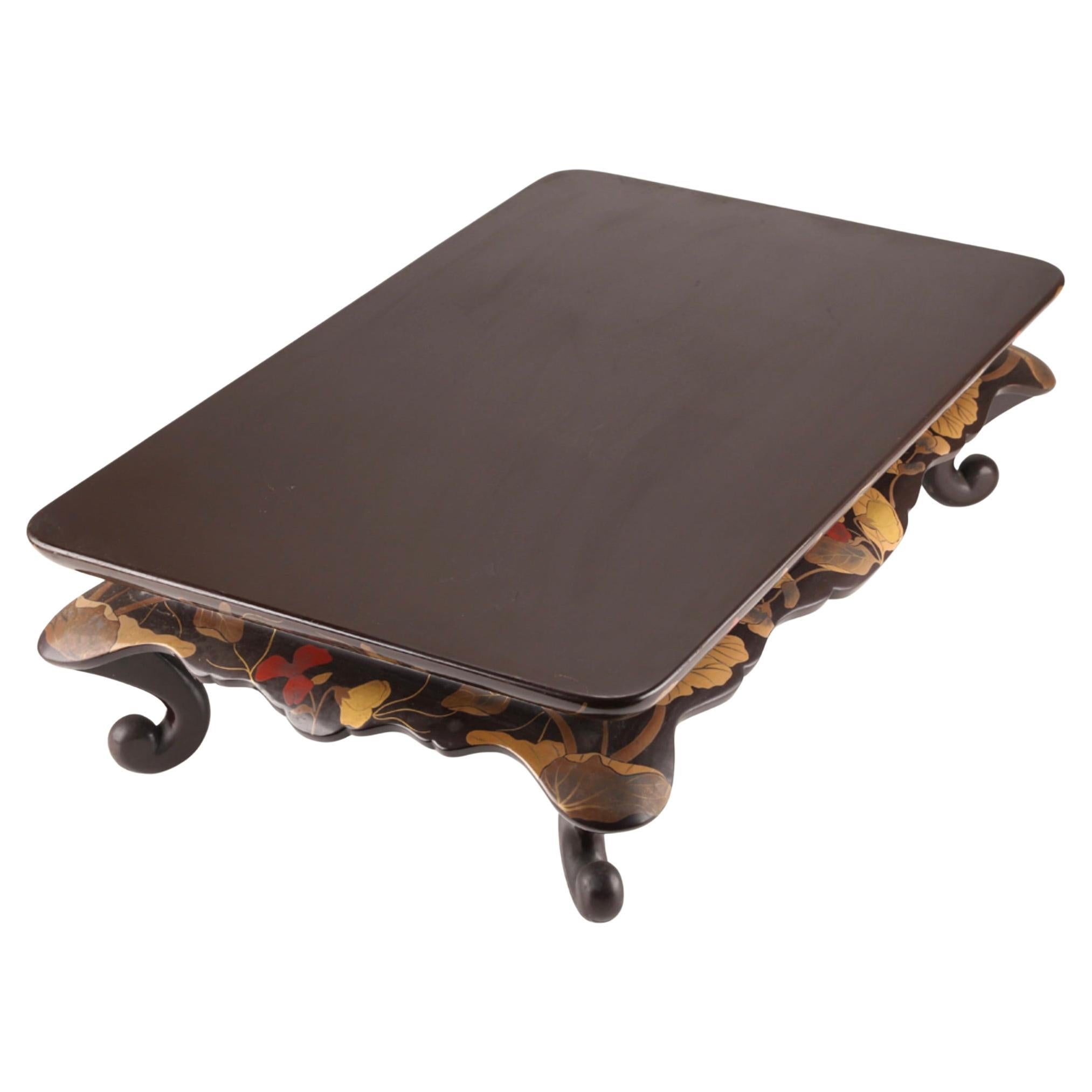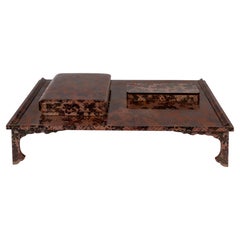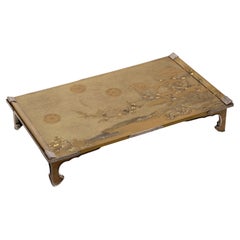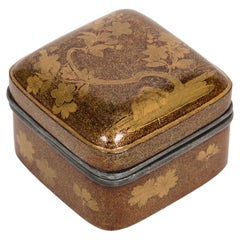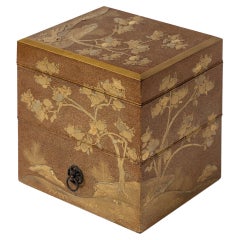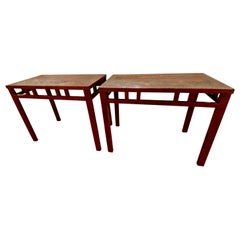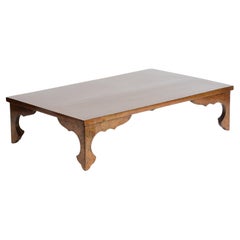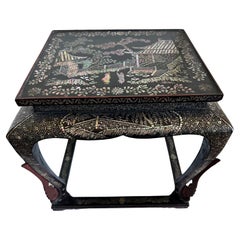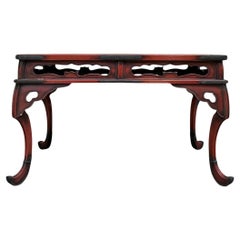Items Similar to Wakasa-Nuri Lacquer Bundai, Ryoshobako, Fubako Set
Want more images or videos?
Request additional images or videos from the seller
1 of 10
Wakasa-Nuri Lacquer Bundai, Ryoshobako, Fubako Set
$11,811.75
£8,874.78
€10,000
CA$16,264.88
A$18,203.40
CHF 9,528.83
MX$221,138.37
NOK 120,991.96
SEK 114,176.58
DKK 76,109.95
About the Item
Set of bundai, ryoshibako and fudebako in wakasa lacquer with an old rose background and black traditional Japanese patterns.
The saya pattern (or sayagata) is composed by Chinese svastikas. This symbol linked to Buddhism, mean intelligence, power and peace. It is a good omen sign.
The kanoko pattern reminds stains on fawn back.
The sakura (cherry blossom) pattern is emblematic of Japan. The blossoming in a short time marks spring beginning and is a symbol of renewal and ephemeral beauty.
There are also traces of calligraphy brush, in reference to the function of the objects.
Bundai is a low table used to put books or scrolls and, later, to write.
Rectangular ryoshibako (letter and document box) with a slightly domed
Fudebako (pencil case) of rectangular format very narrow in its length with two rounded corners, flat cover.
Wakasa lacquerware (wakasa-nuri in Japanese) is a specialty of the Wakasa region in Fukui Prefecture, west of Lake Biwa on the Sea of Japan, produced from the early Edo period (1603-1868). This technique derives from togidashi maki-e and is characterized by the creation of patterns in eggshells, seashells or pine needles.
More specifically, the decoration is obtained by rubbing on superimposed layers of lacquer of different colors. This technique was not known in the West before Japan opened up to international trade*.
Japan, Taisho era (1912-1926)
Dimensions :
Bundai : Height 12.4 cm (4.88 inch) - Length 58.2 (22.91 inch) – Width 34.5 cm (13.58 inch)
Ryoshibako : Height 4.6 cm (1.8 cm) - Length 24 cm (9,45 inch) – Width 18.6 cm (7.32 inch)
Fudebako : Height 2.7 cm (1.06 inch) - Length 22.2 cm (8.74) – Width 8.2 cm (3.22 inch)
* cf Geneviève Lacombe (dir.) L’or du Japon – Laques anciens des collections publiques françaises, p. 187.
- Dimensions:Height: 4.93 in (12.5 cm)Width: 13.59 in (34.5 cm)Depth: 22.84 in (58 cm)
- Materials and Techniques:Lacquer,Lacquered
- Place of Origin:
- Period:
- Date of Manufacture:1912-1926
- Condition:Wear consistent with age and use.
- Seller Location:PARIS, FR
- Reference Number:Seller: 2020-8061stDibs: LU8311234268402
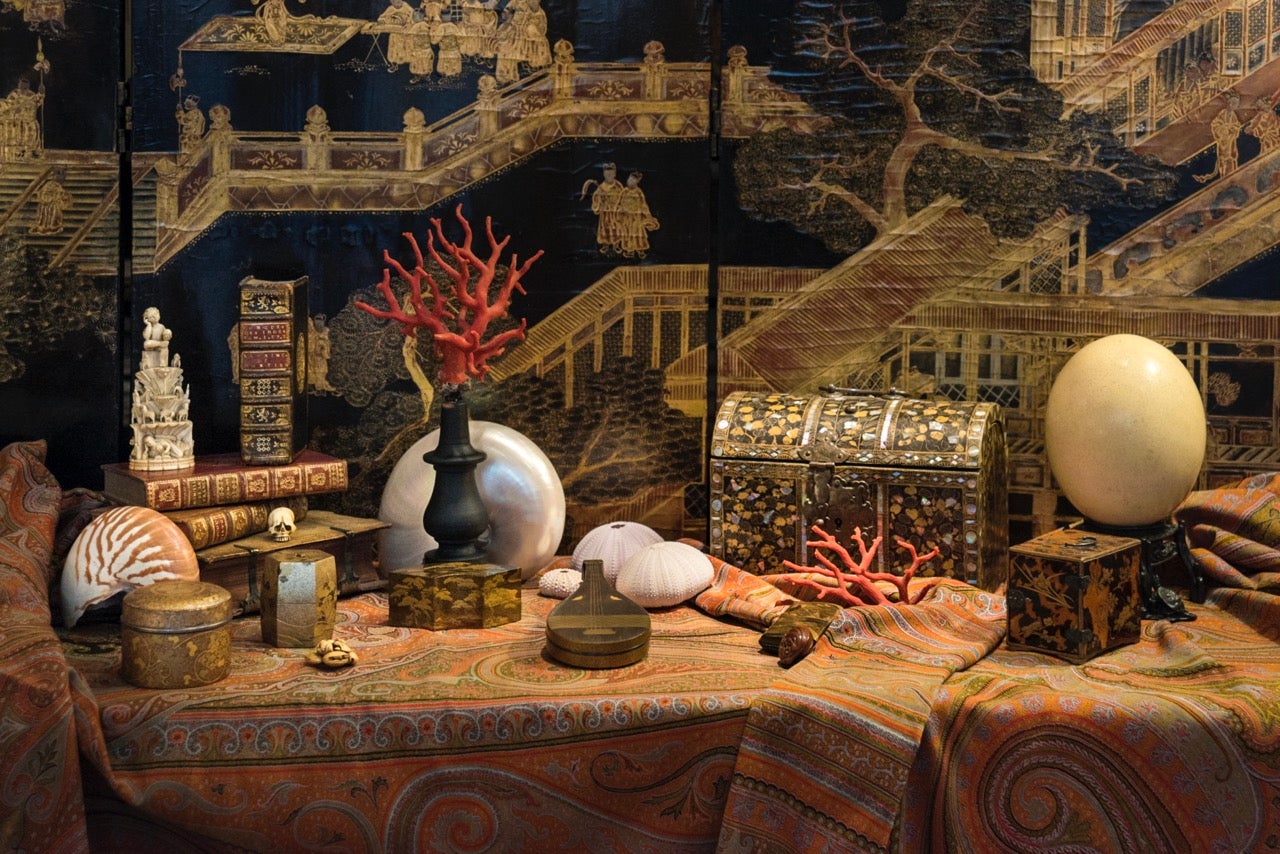
About the Seller
No Reviews Yet
Vetted Professional Seller
Every seller passes strict standards for authenticity and reliability
Established in 2013
1stDibs seller since 2023
Typical response time: A week
- ShippingRetrieving quote...Shipping from: PARIS, France
- Return Policy
Authenticity Guarantee
In the unlikely event there’s an issue with an item’s authenticity, contact us within 1 year for a full refund. DetailsMoney-Back Guarantee
If your item is not as described, is damaged in transit, or does not arrive, contact us within 7 days for a full refund. Details24-Hour Cancellation
You have a 24-hour grace period in which to reconsider your purchase, with no questions asked.Vetted Professional Sellers
Our world-class sellers must adhere to strict standards for service and quality, maintaining the integrity of our listings.Price-Match Guarantee
If you find that a seller listed the same item for a lower price elsewhere, we’ll match it.Trusted Global Delivery
Our best-in-class carrier network provides specialized shipping options worldwide, including custom delivery.More From This Seller
View AllJapanese writting set in waqasa lacquer including bundai ryoshibako and fudebako
Located in PARIS, FR
Set of bundai, ryōshibako and fudebako in wakasa lacquer with an old rose background and black traditional Japanese patterns.
The saya pattern (or sayagata) is composed by Chinese svastikas. This symbol linked to Buddhism, mean intelligence, power and peace. It is a good omen sign.
The kanoko pattern reminds stains on fawn back.
The sakura (cherry blossom) pattern is emblematic of Japan. The blossoming in a short time marks spring beginning and is a symbol of renewal and ephemeral beauty.
There are also traces of calligraphy brush, in reference to the function of the objects.
Bundai is a low table used to put books or scrolls and, later, to write.
Rectangular ryōshibako (letter and document box) with a slightly domed
Fudebako (pencil case) of rectangular format very narrow in its length with two rounded corners, flat cover.
Wakasa lacquerware...
Category
Early 20th Century Japanese Taisho Lacquer
Materials
Lacquer
Japanese Bundai or writting table in gold lacquer with a decor of lake landscape
Located in PARIS, FR
Rectangular bundai writing table on four legs in gold lacquer with black highlights on a nashi-ji background. The top is decorated with a lake landscape with plum trees, pine trees a...
Category
Antique Early 18th Century Japanese Edo Lacquer
Materials
Gold, Bronze
Japanese lacquered Cherry Tree Kobako
Located in PARIS, FR
Kobako in nashiji lacquer of square shape with a hira maki-e décor of a blossoming
cherry tree. Both of the four sides are adorned with golden lacquer cherry flowers,
represented i...
Category
Antique 19th Century Japanese Lacquer
Materials
Lacquer
Japanese Lacquered Tebako 'Box'
Located in PARIS, FR
Tebako box with three compartments in golden and nashi-ji lacquer, decorated with golden, red, and kirigane lacquer, golden persimmon tree leaves, among rocks. The compartments are of increasing size from the top. The decoration is in continuity.
Persimmon has been cultivated in southern China for more than 2500 years and is believed to have been introduced to Japan in the 8th century. The veneer is a tree with very hard wood, similar to ebony. According to a legend, one specimen survived the atomic bombing of Nagasaki on August 9, 1945, close to the epicenter. It is therefore in Japan a symbol of strength and longevity. It is also the national fruit of the country. It is eaten as a traditional dish during New Year's Day celebrations.
Tebako literally means "portable box...
Category
Antique 1860s Japanese Lacquer
Materials
Lacquer
Chinese Altar or Console made of exotic wood
Located in PARIS, FR
Chinese altar also used as console or side table. Made of exotic hard wood, probably zitan, with a dark patina. It features voluptuous flared edges and spandrels carved in cloud moti...
Category
Early 20th Century Japanese Qing Furniture
Materials
Hardwood, Zitan
Japanese Tebako in Nashiji lacquer adorned with golden Persimon flowers
Located in PARIS, FR
Tebako box with two compartments in golden and nashi-ji lacquer, decorated with golden, red, and kirigane lacquer, golden persimmon tree leaves, among rocks. The compartments are of ...
Category
Antique Early 19th Century Japanese Meiji Lacquer
Materials
Gold
You May Also Like
Chinese Lacquer Consoles
Located in Pasadena, CA
This is an unusual pair of Late Ching Chinese cinnabar-toned coromandel lacquer small altar or side tables. The tops of the tables feature complementary incised and painted scenes from Chinese every day life. Both tables are in very good condition considering their 100+ years of use. It is unusual to find a pair of coromandel incised lacquer...
Category
Antique Mid-19th Century Chinese Chinese Export Lacquer
Materials
Wood, Lacquer
$3,815 Sale Price / set
30% Off
Early 20th Century, Showa, Japanese Wooden Lacquered Lower Table / Stand
Located in Sampantawong, TH
Japanese wooden lacquered lower table / stand.
Age: Japan, Showa Period, Early 20th Century
Size: Length 51.8 C.M. / Width 33 C.M. / Height 12.7 C.M.
Condition: Nice condition overall.
Category
Early 20th Century Japanese Lacquer
Materials
Wood
$560 Sale Price
20% Off
Antique Japanese Lacquer and Inlay Table from Ryukyu Islands
Located in Atlanta, GA
A small square-form table with lacquer and intricate mother-of-pearl inlay design from Ryukyu Islands kingdom circa 17-18th century. Ryukyuan kingdom was used to be an independent is...
Category
Antique 18th Century Japanese Edo Lacquer
Materials
Mother-of-Pearl, Lacquer
Rare Japanese Negoro Lacquer Table with Curved Legs (Late 17th–18th Century)
Located in Fukuoka, JP
are Japanese Negoro Lacquer Table with Curved Legs (Late 17th–18th Century)
Japan, Edo period
Dimensions: H 26.5 cm × W 43.1 cm × D 27 cm
(Top surface: W 42.7 cm × D 25.7 cm)
This e...
Category
Antique Late 17th Century Japanese Edo Furniture
Materials
Wood, Lacquer
Exceptional 19th Century Wajima Lacquer Low Table with Gold Makie Decoration
Located in Fukuoka, JP
An exquisite antique Japanese low table (hiradaku) from the 19th century, crafted in the renowned Wajima lacquer tradition of the Noto Peninsula. The table features a deep, lustrous ...
Category
Antique 19th Century Japanese Meiji Furniture
Materials
Wood, Lacquer
Antique Japanese Lacquer and Inlay Kang Table from Ryukyu Island
Located in Atlanta, GA
A small low table with lacquer and intricate mother-of-pearl inlay design from Ryukyu Islands kingdom circa 17-18th century. Ryukyuan kingdom was used to be an independent island cou...
Category
Antique 18th Century Japanese Edo Lacquer
Materials
Mother-of-Pearl, Lacquer
More Ways To Browse
Lacquered Chinese Table
Round Black Lacquer Table
Black Lacquer Table Sets
Japan Lacquer Table
Japanese Lacquered Table
Antique Brush Set
Asian Corner Tables
Lacquer Scroll Table
Antique Chinese Lacquer Box
Japanese Black Lacquer Table
Antique Japanese Lacquer Tables
Chinese Antique Black Lacquer Table
Chinese Black Lacquer Box
Calligraphy Brush
Calligraphy Brushes
Japanese Corner Tables
Lacquered Eggshell
Chinese Lacquer Low Table
